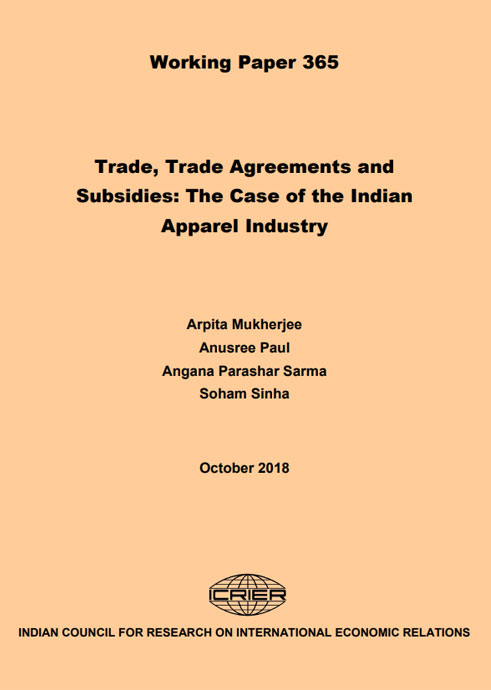
India has a large positive trade balance in the apparel sector and is ranked among the top 10 apparel exporting countries. However, of late, its export growth has stagnated and the country is facing competition in key export markets such as the United States and the European Union from other developing countries such as China, Vietnam and Bangladesh. Apparel manufacturers and exporters face two major challenges. First, India’s export promotion schemes have been challenged under the World Trade Organization’s Agreement on Subsidies and Countervailing Measures and second, India is negotiating mega-regional trade agreements such as the Regional Comprehensive Economic Partnership, with countries such as China and Vietnam, which may lead to a rise in imports without a corresponding an increase in market access for exporters. Given this scenario, this paper presents India’s trade in apparel products by sub-sectors and key markets, and analyses its trade competitiveness across different sub-sectors. It examines the impact of trade agreements and receiving country policies on India’s apparel exports. It also analyses the issues faced by the apparel industry in India and compares India’s position vis-à-vis other apparel exporting countries, in terms of factors that can affect export competitiveness and efficiency. It tries to investigate the impact of subsidies prohibited under the World Trade Organization’s Agreement on Subsidies and Countervailing Measures on apparel exports from India. Based on this, it makes recommendations on how to design a comprehensive trade policy that will (a) enhance the export competitiveness of this sector (b) be WTO compliant and (c) ensure greater market access for Indian apparel exporters after trade agreements are signed.





